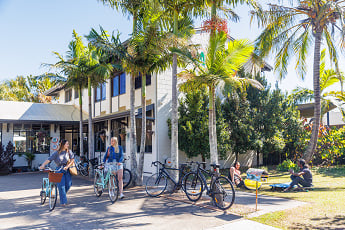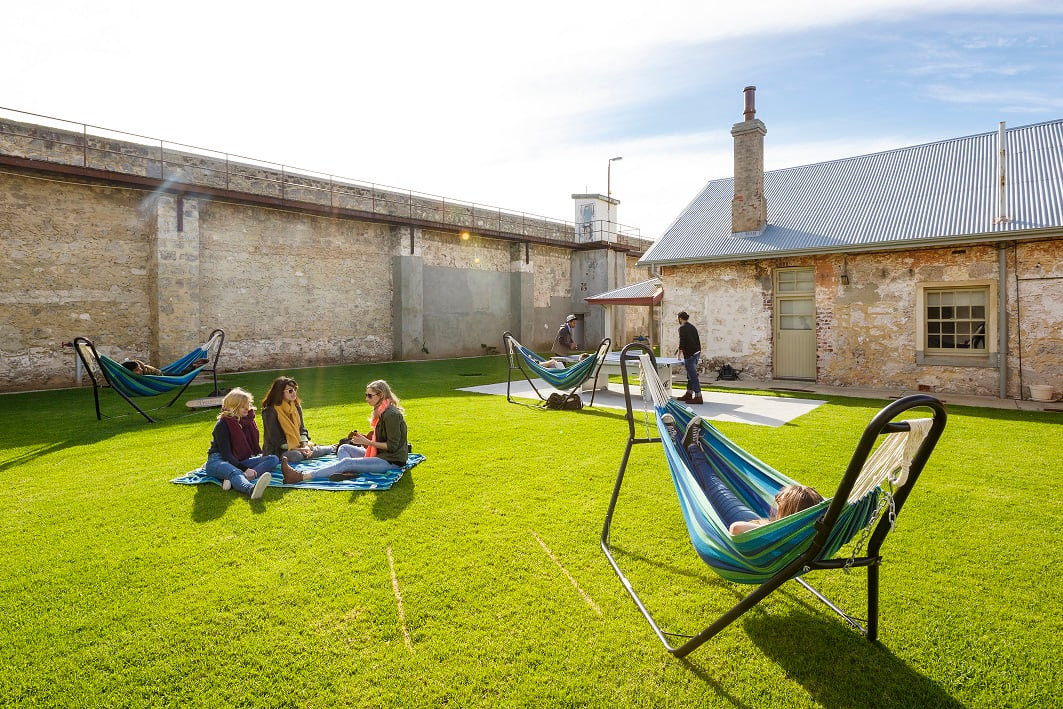9 Aboriginal sacred places you should visit (and one you shouldn't!)
Tibrogargan, Beerwah & Coonowrin, Glass House Mountains, QLD

Image: Tourism and Events Queensland
Jutting out of the otherwise flat hinterland of the Sunshine Coast, the Glass House Mountains hold a special significance to the local Kabi Kabi and Jininbara peoples. The cores of extinct volcanoes dating back some 26 million years, these eleven peaks and the lands surrounding them were an important site for meetings and ceremonies for their Traditional Owners.
As the story goes, the largest of the mountains (Tibrogargan and Beerwah) were husband and wife, while the others were their children. Tibrogargan asked his son, Coonowrin, to rescue Beerwah from an immense flood, but when Coonowrin failed to do so, Tibrogargan broke his neck in a fit of rage and then turned away in disgust, leaving his son with a crooked shape to this day.
The area is an exceptionally beautiful place to visit and hike, though the Traditional Owners ask that you refrain from climbing the two most sacred peaks, Tibrogargan and Beerwah.
Nearest YHA: YHA Coolangatta
Lake Mungo/Mungo National Park, NSW

Image: Destination NSW
Way out in the arid landscape of outback NSW, Lake Mungo is a dry lakebed that forms part of the World Heritage-listed Willandra Lakes Region. Sacred to the Paakantyi, Nyiampaa and Mutthi Mutthi peoples, whose ancestors once resided here, the area is not only a place of great spiritual and cultural importance, but also considerable archaeological significance to humanity as a whole.
This is the site of the oldest human remains found in Australia ('Mungo Man'), who was found with a tooth ritually removed in the same manner many Aboriginal cultures do today – an important clue for recognising the ancient practices of Aboriginal Australians as the world's oldest continuous culture. The Paakantyi and Nyiampaa today jointly manage the area with the NSW Government, and welcome visitors all year round.
Gariwerd/Grampians National Park, VIC
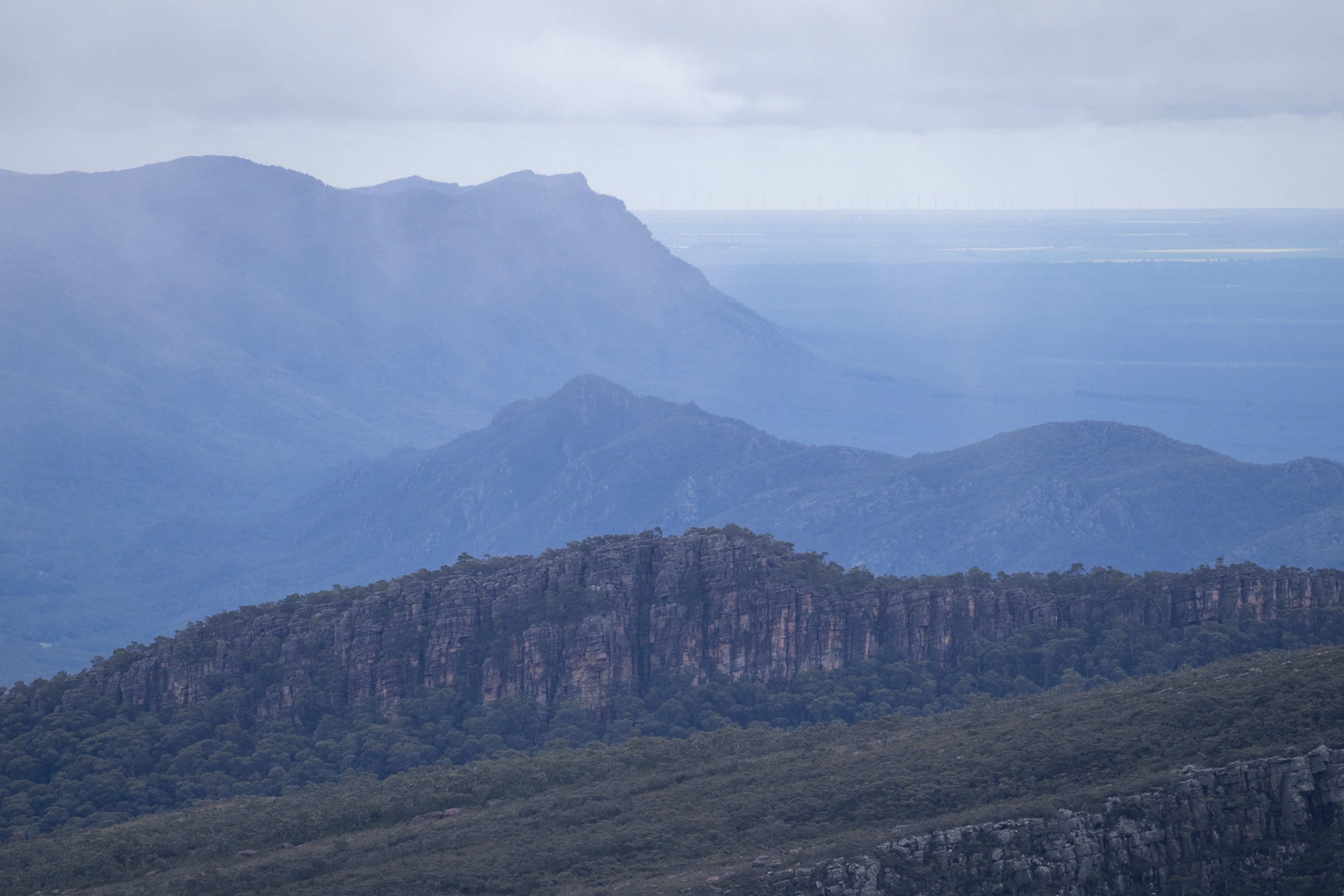
Image: Tourism Australia
Gariwerd, or as it is commonly known, the Grampians, is a jagged mountain range in rural Victoria whose caves, cliffs and gullies are home to over 90% of the state's Aboriginal rock art. Depicting the Dreaming stories of the local Jardwadjalli and Djab Wurrung people, much of this art concerns the creator being, Bunjil, who after crafting the vast sandstone expanse of the mountains, would take the form of an eagle named Werpil and admire its beautiful landscapes from above. The lore also tells of a cave he would shelter in, which can still be found in the Black Range to the east of Gariwerd, with a depiction of Binjil enscribed on its walls.
At over 3 hours from Melbourne, Grampians National Park is fairly remote, but makes for a peaceful place to immerse yourself in nature and Aboriginal history.
Nearest YHA: YHA Grampians Eco
Uluru Kata Tjuta National Park, NT

Image: Tourism NT/Jason Charles Hill
The literal and spiritual heart of Australia, Uluru Kata Tjuta National Park encompasses an area centred on Uluru and Kata Tjuta, two immense sandstone formations rising out of the red sand of the Central Australian desert. These are places of great significance to the Anangu of the Yankunytjatjara and Pitjantjatjara groups, as well as many First Nations people generally, and there are a multitude of Dreaming stories recounting how ancestral beings shaped the land as they went about their lives. The marks and scars of their exploits, their jubilation, their anger, and their sorrow later hardened to stone in the form of the monolith Uluru and its many-headed sibling.
Though you can no longer climb them, both remain an immensely popular pilgrimage for Australians and travellers from all over the world. Go for the humbling feeling of seeing them in person, and be sure to book a tour with a local Aboriginal guide for the full experience.
Bandilngan/Windjana Gorge, Kimberley region, WA
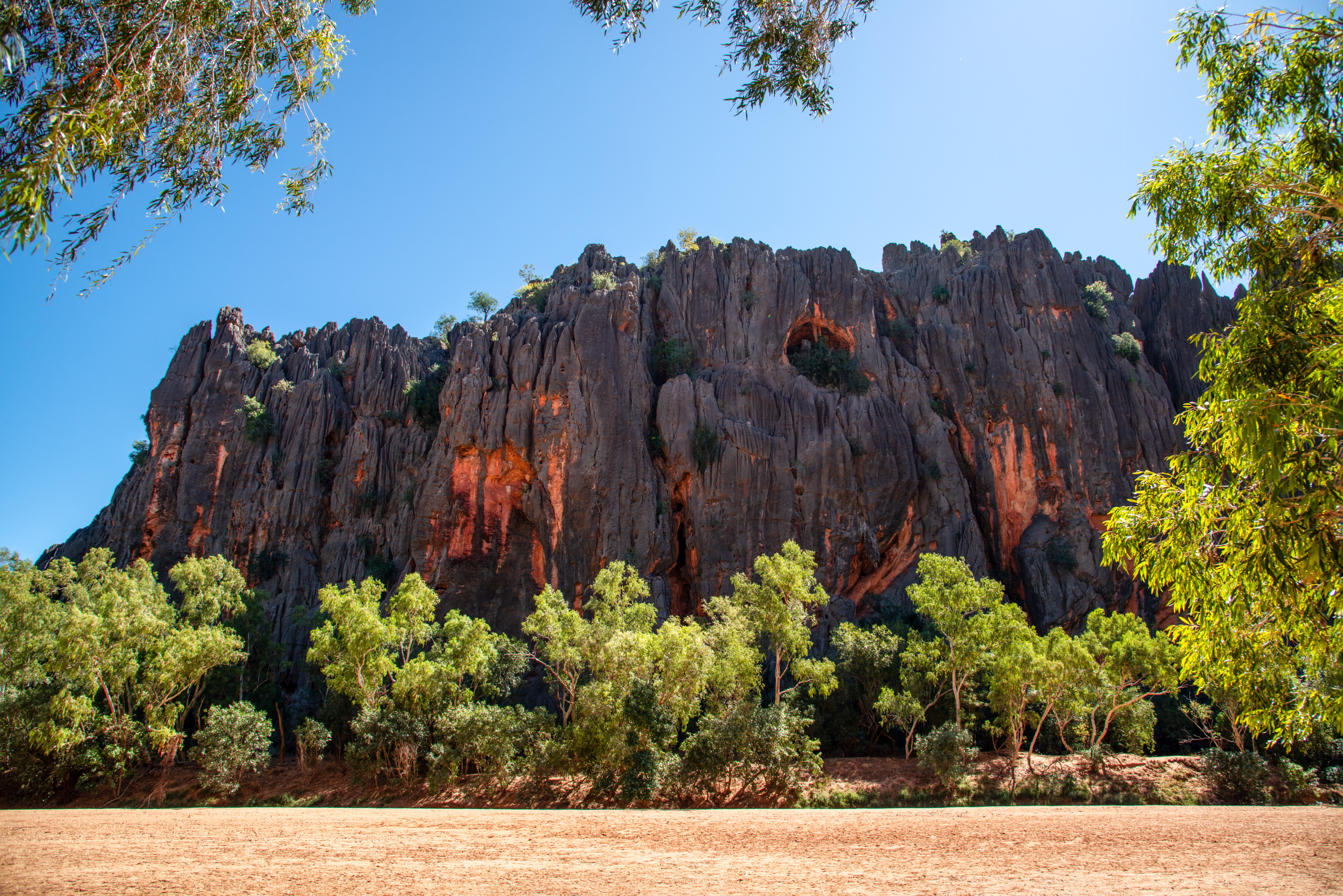
Image: Tourism Western Australia
Windjana Gorge, known as Bandilngan in the language of the Banuba, is one of many areas rich with cultural significance in the wild reaches of WA's Kimberley region. Cutting through the heart of the limestone buttress of the Napier Range, Bandilngan comprises part of the Devonian Reef, a vast fossilied ecosystem once submerged beneath a shallow sea.
Not only is the place central to the Banuba's spiritual beliefs, its undulating rock walls served as a crucial shelter for Banuba warriors in the late 1800s as they defended their land from invading white settlers.
If you're planning a trip, be aware that the area is open only during dry season (April-November), and keep in mind that the Traditional Custodians ask that you don't swim here or try to climb the central boulder – the most sacred place in the gorge, and said to retaliate with immense storms if disturbed.
Ikara Wilpena/Wilpena Pound, Flinders Ranges, SA
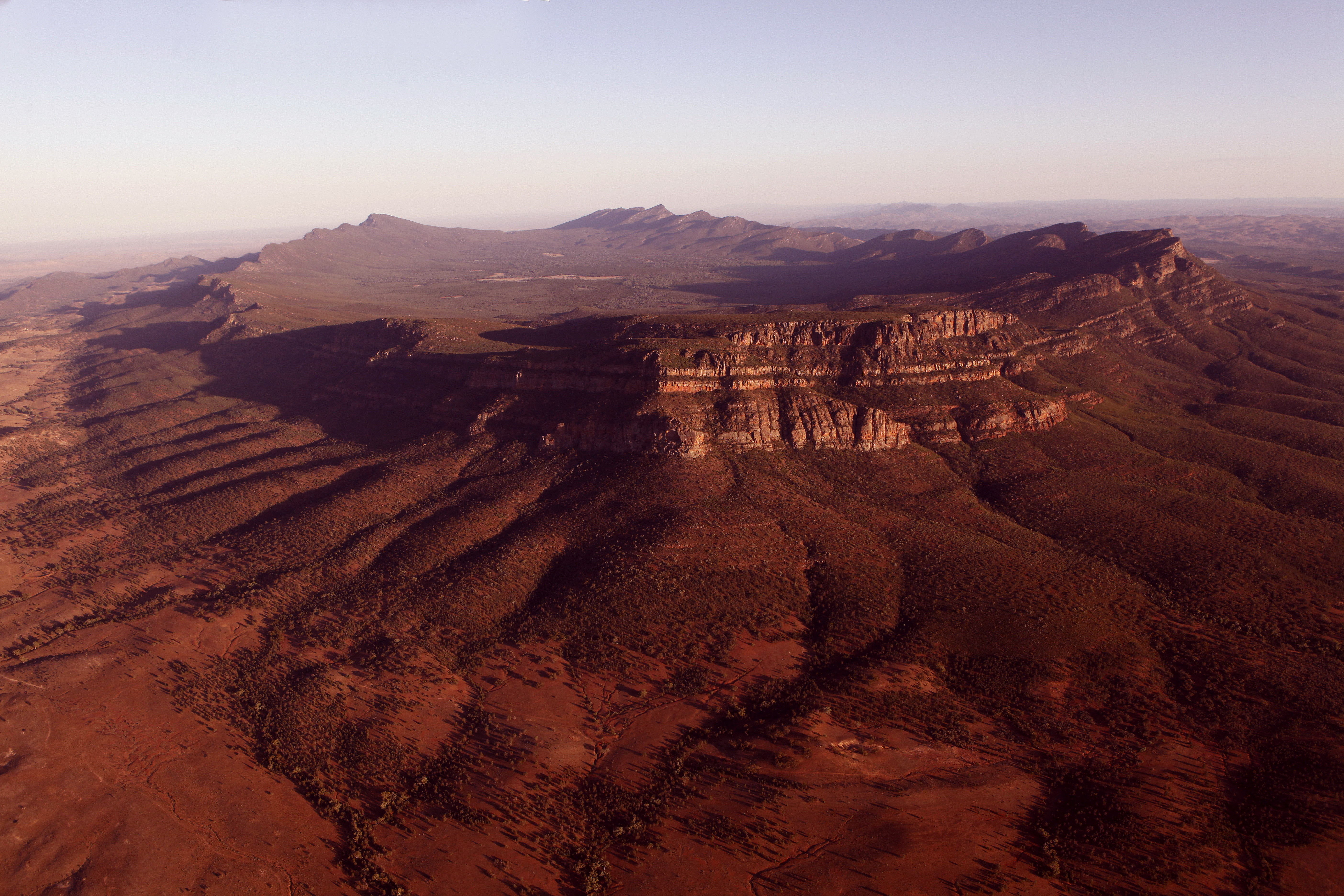
Image: Anthology Travel
The Yura Muda Dreaming stories of the Adnyamathanha people tell of two immense dreaming serpents who ate so many people they could no longer move, their prostrate bodies forming the vast amphitheatre shape of Ikara Wilpena. Meaning 'meeting place' in the Yura Muda language, Ikara Wilpena is an important spot for cultural ceremonies and initiations. It's worth tackling some of the challenging hikes to see the stunning landscape from above when you visit, as well as checking out the rock art at Arkaroo Rock, Perawurtina Cultural Heritage Site and Sacred Canyon (the latter of which is only accessible on an official tour).
Management of the entire Ikara-Flinders Ranges National Park is split between the South Australian government and the men and women of the Adnyamathanha, who do request that visitors refrain from ascending St Mary's Peak past Tanderra Saddle (which still has incredible views) for spiritual reasons.
Nearest YHA: YHA Adelaide Central
Kurtonitj (within the Budj Bim Cultural Landscape), VIC

Image: Visit Victoria
Not as visually spectacular as many of the sites on this list, but one of the most intriguing – Kurtonitj is a historical area within the Budj Bim Cultural Landscape, an enclave of protected territory central to the way of life of the Gunditjmara people. Impressively, the oral histories passed down by the Gunditjmara rather accurately recount the creator spirit, Budj Bim, taking the form of a volcano and erupting, spitting lava from his mouth across the land to flow into the sea. Today, we know that Budj Bim/Mt Eccles is indeed volcanic in origin and that it last erupted some 30,000 years ago, its hardened lava flows forming water channels that the Gunditjmara later cultivated with sophisticated stone eel traps.
Along with the remnants of the permanent basalt dwellings found at the site, Kurtonitj is fascinating evidence that Aboriginal people were not just hunter gathers, but also farmed the land. The Budj Bum Cultural Landscape gained recognition as a UNESCO World Heritage site in 2019 and there are excellent tours available for visitors.
Wadjemup/Rottnest Island, WA

Image: Oisin Cooke
Rottnest Island got its common name from Dutch sailors who saw the island's quokka population and mistook them for rats (hence, 'rat's nest'). But the Whadjuk Noongar people of the region long knew it by a different name.
Wadjemup, or the 'land across the sea inhabited by spirits', was and remains central to Whadjuk beliefs relating to life after death. But the verbally recorded knowledge of the Whadjuk goes even further back – to before the seas rose, when it was an important ceremonial ground connected to the mainland.
Tragically, in the 1800s, Wadjemup became the site of an Aboriginal penal colony, which subjected prisoners to immense hardship and led many to die there – far from their loved ones and stripped of their culture. Nowadays, it's easy to forget the island's dark colonial history as you take in its gorgeous scenery and endearing wildlife, but when visiting, be sure to be aware and respectful of its past, and the continuing spirituality of the place.
Nearest YHA: YHA Fremantle Prison
Kakadu National Park (many sites), NT
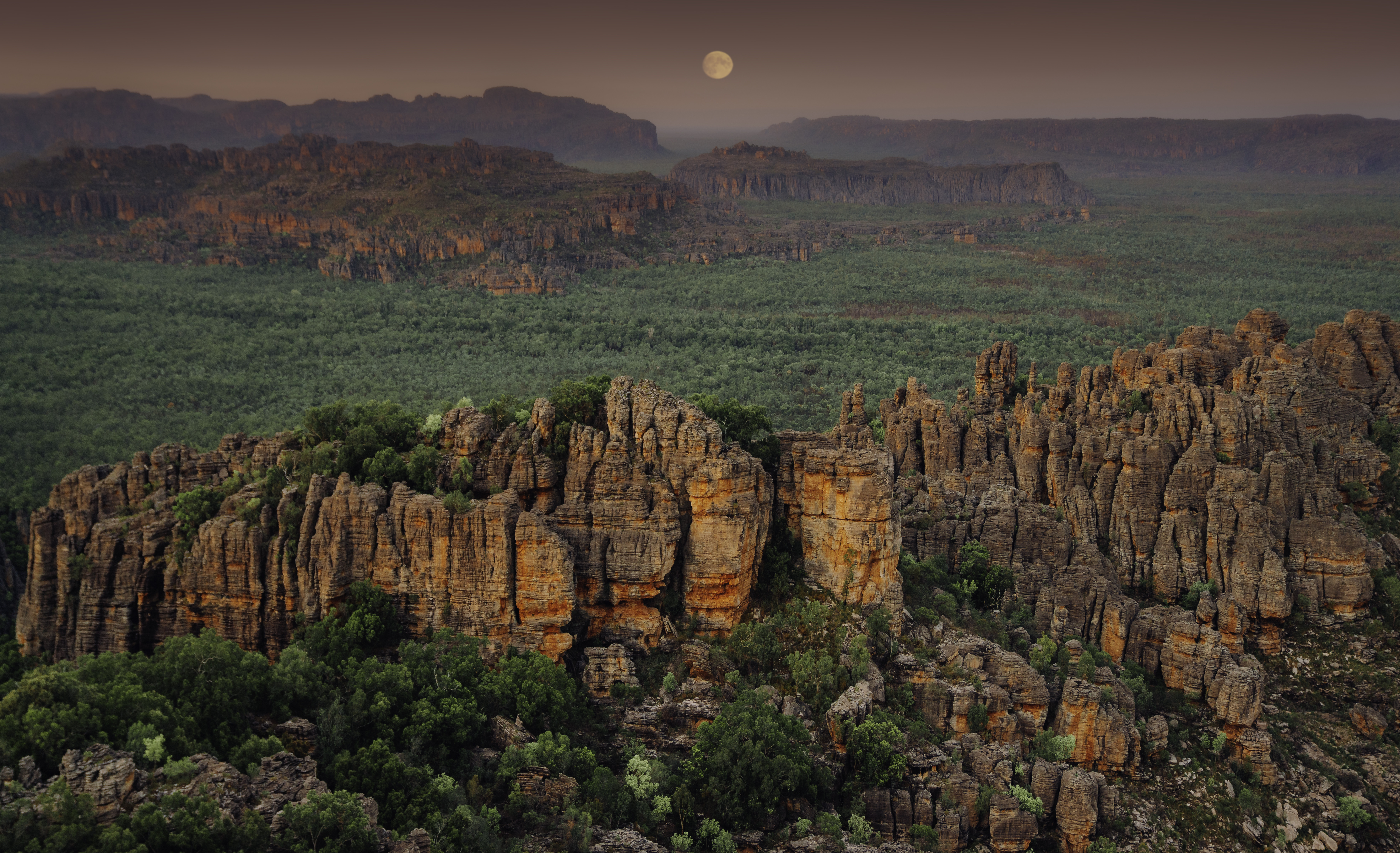
Image: Tourism NT/@helloemilie
The ancestral heartland of the diverse Bininj/Mungguy of northern NT, Kakadu National Park harbours countless sacred places within its borders. A great epicenter of rock paintings, many of Kakadu's Dreaming songlines concern the creation spirits Namarrkon, a lightning-wielding being who is said to reside in Arnhem Land, and the Rainbow Serpent, who created the waterholes and rivers of the Kakadu landscape.
UNESCO-enscribed like many of the places featured in this article, most of the park is incredible to visit and explore, but there are a number of sites which are off limits to tourists – be they dangerous to access, or forbidden by the traditions of the local Aboriginal people. Some of the very sacred spots you can visit feature incredible rock art, including Burrunguy (Nourlangie Rock), Ubirr and Naguluwur.
Be sure to do your research and consult with the Tradtional Owners and local rangers before heading off the beaten path in Kakadu, not least because of the saltwater crocodiles that make it their home.
Kalkajaka/Black Mountain National Park, QLD
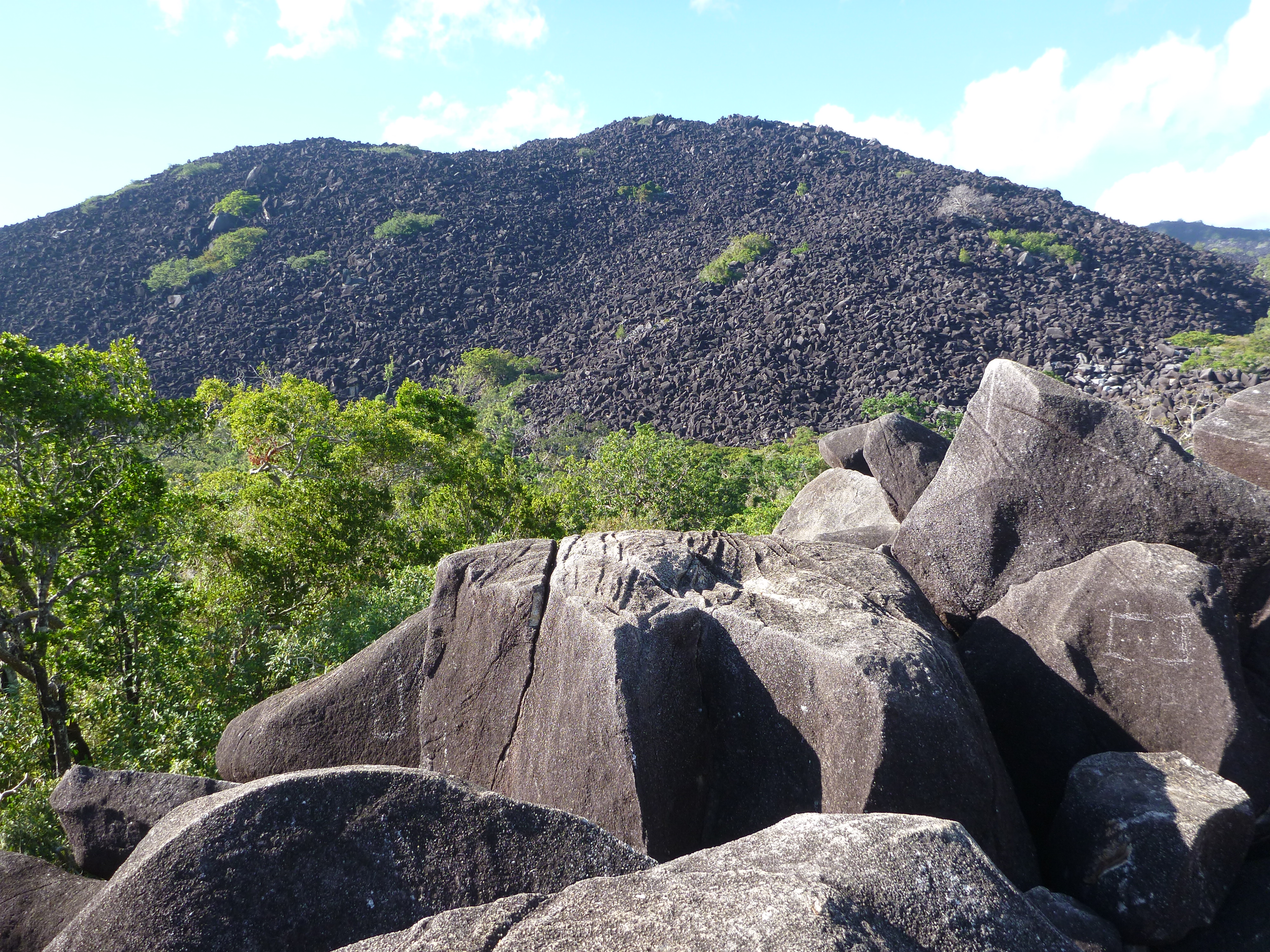
Image: Doug Beckers via Flickr
Located in the Cooktown area of Tropical North Queensland, Kalkajaka is an oddly incongruent and unsettling landform to behold. The Kuku Nyungkal, on whose traditional lands it lies, believe it to be a cursed place for a number of reasons.
As the story goes, the mountains were created when two ancient giants, who were brothers, fell in love with the same woman and gathered up piles of granite stones to hurl at one another. After simultaneously striking and killing each other, their mounds of ammunition were left behind in the form of Kalkajaka.
If that wasn't grim enough, the place later became the location of a brutal spear fight between rival clan groups from inland (Black Cockatoos) and coastal regions (White Cockatoos), leading to countless deaths amongst the boulders.
These days, the Kuku Nyungkal refuse to go near Kalkajaka, believing the bad spirits that now reside there will make anyone setting foot on the mountains incredibly sick. Considering it's little more than a couple of piles of rocks, we advise you follow suit.
Nearest YHA: Don't even think about it...
General tips for visiting sacred places
- Visitors permits and/or National Parks passes are required for entry into some of these areas. Do your research to avoid disappointment!
- Never do anything to damage (chipping rocks, cutting branches etc), deface (graffiti, litter) or otherwise disrespect a sacred site. Similarly, take nothing with you when you leave – not even a pebble or twig.
- If you've been welcomed into a site of particular significance or with restricted access, be sure to not take photos without explicit permission. Likewise, it's good practice to ask before taking any photos of First Nations people (and people in general) you meet on your travels.
- Be aware that depending on the place, consumption of alcohol on Aboriginal-owned land is often frowned upon or outright banned.
- Finally, don't be too worried about making a faux pas. Just follow these guidelines, be generally respectful, and remember whose back yard you're visiting! If you're unsure of appropriate behaviour, just ask.
Words: A. Hill-Lees
